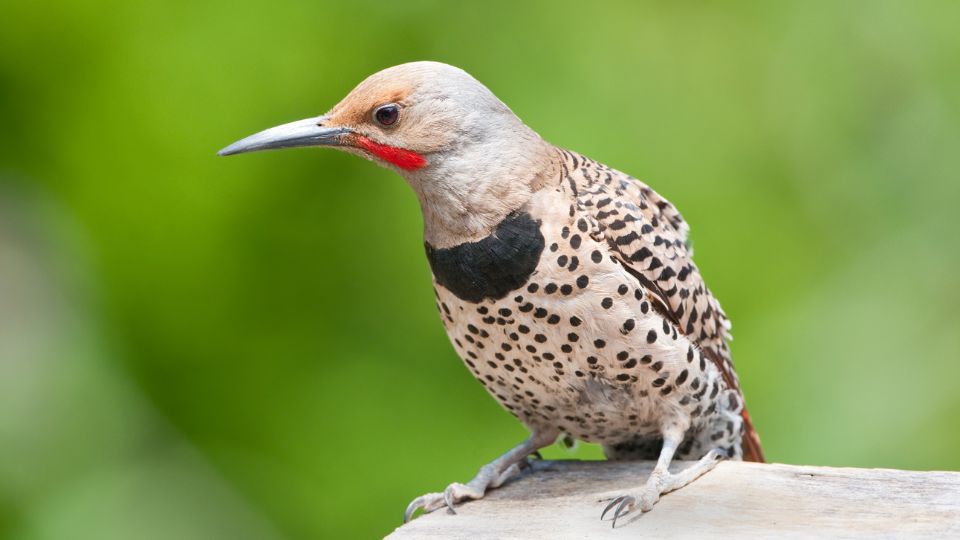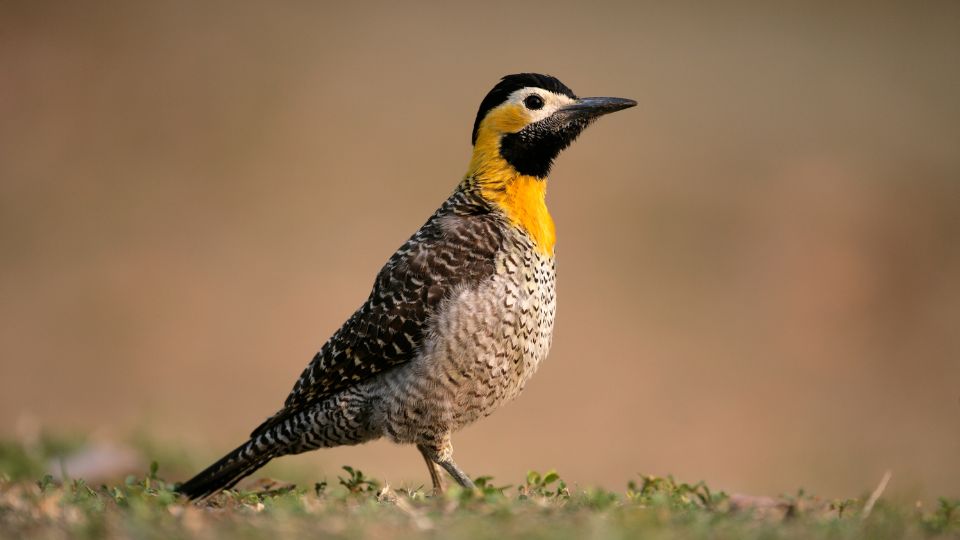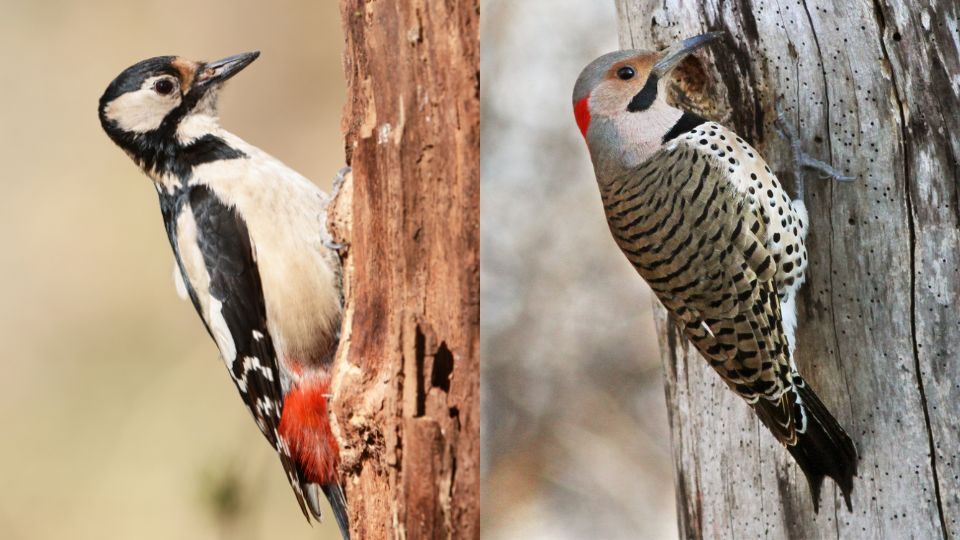Flickers are from the Picidae (woodpecker) family. There are approximately 14 types of flickers in the "Colaptes" sub-species, all of which predominantly dwell In tropical climates, with the exception of the Northern flicker. Flickers are beautifully speckled and colorful ground foragers.
Is it a flicker bird or an art installation? These colorful subspecies of woodpeckers are bright and charismatic and are on every bird watcher’s must-see list! There are 14 different species of Colaptes peppered throughout the world, but only a few reside in North America. Many species of flicker live in Central and South America, while some are year-round residents in the North.
Types of Flickers
While flickers are very similar to woodpeckers, they often have a larger wingspan and are accented with bright colors. It is sometimes challenging to spot the differences between different species of flickers, so it’s super important to pay close attention to the feathers.

Northern Flicker
The coloring of its plumage makes the northern flicker (aka Colaptes auratus) stand apart from other woodpeckers like the Pileated woodpecker or the other woodpecker species. It has similar color on its head, like a mourning dove with black spots on its underbelly that look like they were painted. Another distinguishing feature of the Northern flicker is its black crescent bib and white rump patch accented by hints of yellow in its underwings.
The Northern flicker, also known as a red-shafted flicker, is a bright, colorful bird that looks exotic. Still, it’s commonly found in deciduous forests in most parts of Canada (as far North as Alaska) and the United States. While they are most abundant in forests, they are also found in urban and suburban areas. You can even draw these colorful birds in your backyard with the right food!
Like woodpeckers, the Northern flicker is a year-round North American bird with a comprehensive range map. It can be found coast to coast in open areas in North America and parts of Canada in the non-breeding season. Wherever you are live in the United States, there’s a good chance you can catch a glimpse of this stunning species of Colaptes!

Gilded Flicker
Think of the gilded flicker like the Northern flicker’s flashier cousin. At first glance, these two birds look identical. They have similar black dotted patterns on the breast and even similar patches of red color on their cheeks. The difference with the gilded flicker is that it has flashes of yellow feathers on its underwings. The yellow pop of color isn’t noticeable when perched on a branch, but it becomes abundantly clear once these birds take flight. They look like a pop of sunshine gracing the tree line.
Unlike the Northern flicker, gilded flicker sightings are rare. Their most common nesting sites are in a hollowed space within the saguaro cactus. Since they prefer wide open spaces that are dry and mild, the gilded flicker is only spotted in desert ranges in the United States that include parts of Colorado, Mexico, and Baja California.

Campo Flicker
While the campo flicker isn’t found in North America, it’s abundant in many parts of South America. It has a similar build to other flickers, with more bright notes of color in its feathers. Campo flickers have a bright pop of orange feathers on its bib that starkly contrasts against black bars on its wings. Like other flickers, the campo flicker is a ground-dwelling bird that excavates bugs from the ground rather than scavenging them from tree branches.

What is the Difference Between a Woodpecker and a Flicker?
The Northern flicker is a member of the Picidae or Piciformes family, a subspecies of Woodpeckers. Flickers have much in common with woodpeckers, but they are separate species. They are of similar size, and they are most commonly found in North America. These nest-cavity birds build nests in the holes of hollowed-out tree trunks and live on a diet rich in bugs and insets.
However, while woodpeckers drill bugs out of the branches of dead trees, flickers are ground-dwelling birds that excavate ants and insects out of the ground with their long bills. Also, unlike woodpeckers, flickers are migratory birds that pack up and leave when the temperatures fall.
What Does the Northern Flicker Eat?
The Northern flicker is a likely candidate if you want to attract flickers to your yard. During breeding, the Northern flicker eats bugs such as larvae, ants, and caterpillars. Since some of these birds do stay around seasonally, they do switch to a diet of nuts and berries when bugs aren’t abundant. If you want to draw these birds to your backyard feeders, knowing what they like to eat is critical.
While they sometimes dine on the offerings of the general songbird mix, flickers prefer things like nuts, berries, and suet with mealworms during the cold winter months. Since Flickers are ground-dwelling birds (unlike woodpeckers), it’s never a bad idea to throw some extra nuts or wild cherries on the ground for these rare birds!

